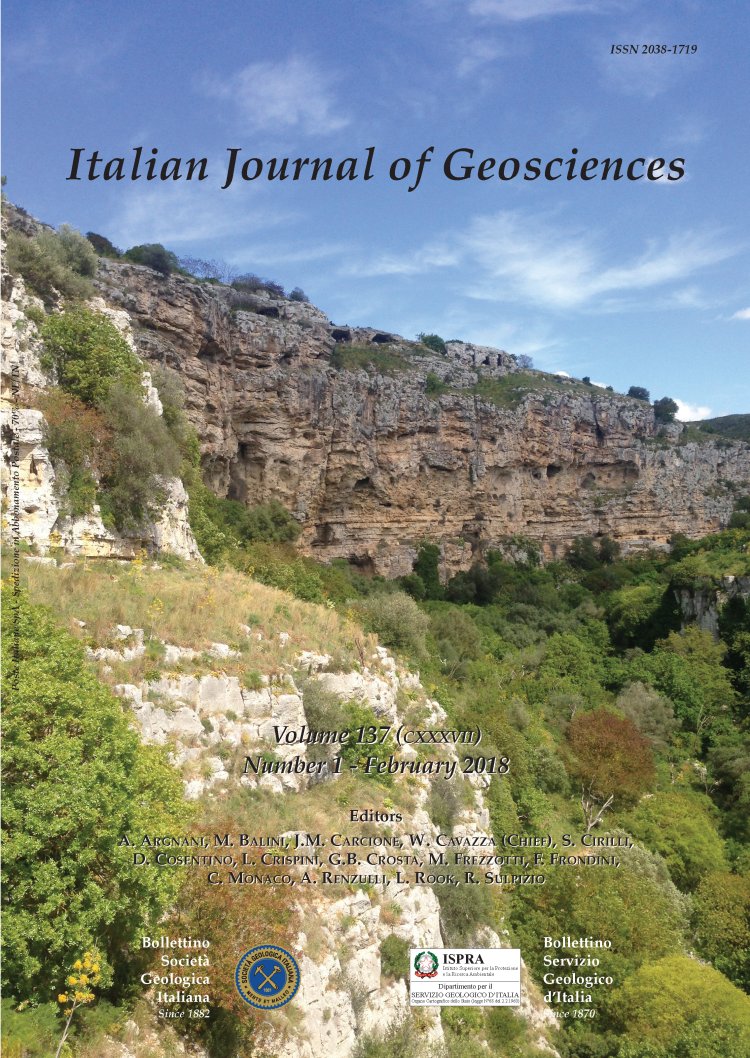
First report of hybodont shark from the Toarcian Rosso Ammonitico Formation of Umbria-Marche Apennine Polino area, Terni, Central Italy)
Marco Romano (1,2,3), Paolo Citton (2,3,4), Angelo Cipriani (2,3) & Simone Fabbi (2,3,5)
(1) Evolutionary Studies Institute (ESI), School of Geosciences, University of the Witwatersrand, Johannesburg, South Africa. (2) Dipartimento di Scienze della Terra, Sapienza Università di Roma, P.le Aldo Moro, 5, 00185, Rome, Italy. Corresponding author e-mail: paolo.citton@uniroma1.it. (3) Apennine Team. (4) CONICET - Instituto de Investigación en Paleobiología y Geología, Universidad Nacional de Río Negro, Av. Roca 1242 (8332), General Roca, p.cia. de Río Negro, Argentina. Corresponding author e-mail: pcitton@unrn.edu.ar. (5) CNR – Istituto di Geologia Ambientale e Geoingegneria, Via Salaria km 29,300 - 00015 Monterotondo (RM).
DOI: https://doi.org/10.3301/IJG.2018.01
Volume: 137 (2018) f.1
Pages: 151-159
Abstract
In this contribution we present the first material referable to hybodont shark from the Rosso Ammonitico Formation (Umbria-Marche-Sabina Palaeogeographic Domain). Two teeth were recovered isolated within Toarcian red marly-limestone (Bifrons Zone). The best-preserved tooth is characterized by a general structure well in accord with the classic crushing dentition typical of hybodont sharks within the Subfamily Acrodontinae. The gently domed occlusal surface of the tooth does not show any trace of occlusal crest and of wrinkles, and is characterized by densely pitted, finely reticulated ornamentation. The available characters allow a conservative classification of the material at the genus level as Asteracanthus sp. The best-preserved tooth can be referred to the most mesial area of the first row of lateral teeth, using as a reference the holotype of Asteracanthus medius. The new material represents the earliest evidence of Asteracanthus and the second one from the whole Northern Apennines (Central Italy), throwing new light on the dispersal of the genus on the Jurassic Tethys.
Keywords
Get Full Text Supplementary Material